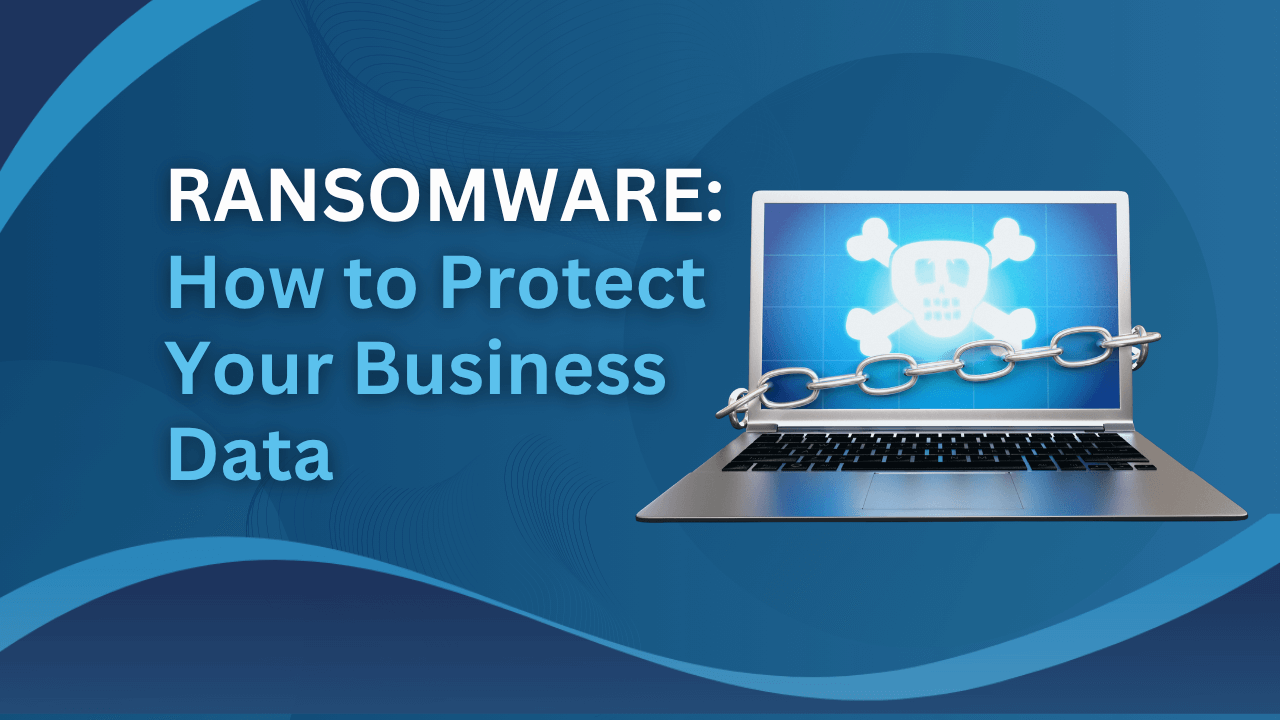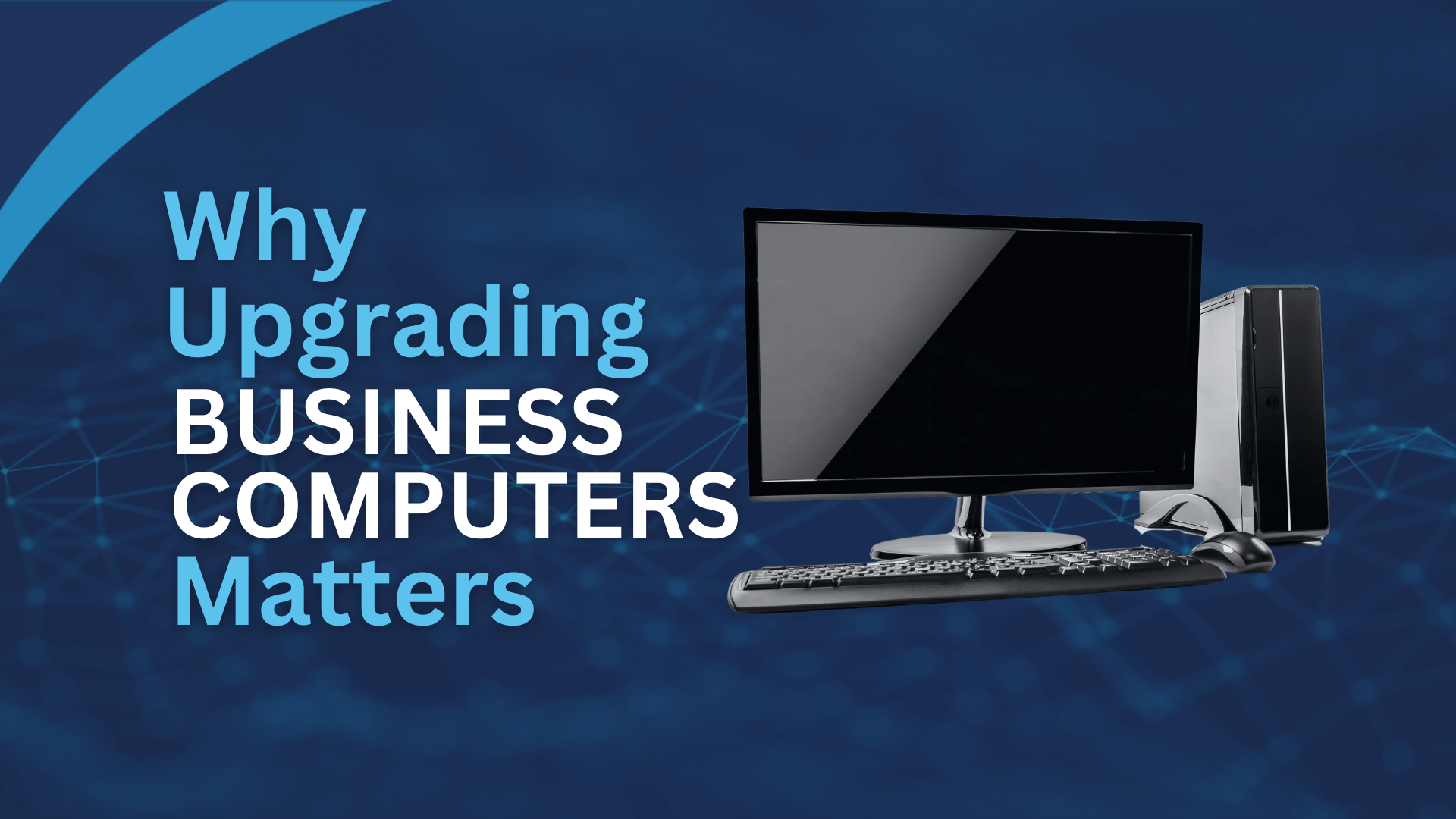The new era of Information Technology landscape is evolving faster than ever before, and 2026 marks a pivotal moment for Australian small businesses. Unlike previous years where technology was simply a business tool, today’s IT trends are becoming the backbone of competitive advantage, operational efficiency, and customer satisfaction.
For small business owners across Australia, from Brisbane to Perth, the question is no longer whether to adopt new technology, but which innovations will deliver the greatest return on investment. Recent research shows that 76% of small businesses using smart technology are experiencing growth, whilst those hesitating risk falling behind competitors who are already leveraging these advancements.
At Netcomp Solutions, we’ve witnessed firsthand how strategic IT adoption transforms Australian small businesses. This comprehensive guide reveals the five critical IT trends that will define success in 2026—and more importantly, how your business can implement them effectively without breaking the bank.

Why 2026 Is Different: The Technology Tipping Point
Before diving into specific IT trends, it’s essential to understand what makes 2026 unique. Several factors are converging simultaneously:
- Accessibility: Firstly, technologies once reserved for large enterprises are now affordable and accessible to SMBs
- Integration: Secondly, modern solutions work together seamlessly, creating powerful ecosystems rather than isolated tools
- Regulation: Thirdly, new Australian cyber security laws are raising the bar for data protection and compliance
- Competition: Additionally, the digital divide between tech-savvy businesses and laggards is widening rapidly
- Customer expectations: Finally, Australian consumers increasingly demand digital-first experiences from all businesses, regardless of size
This convergence means that small business management can now compete with larger organisations on technology capabilities—but only if they make informed decisions about where to invest.
1.Practical AI Integration: From Hype to Everyday Productivity
What’s Changed in 2026
Artificial Intelligence (AI) has finally moved beyond experimental pilot projects into everyday business applications. However, the winners in 2026 aren’t those with the most ambitious AI strategies—they’re businesses using AI to eliminate time-consuming tasks and enhance human decision-making.
Why It Matters for Australian Small Businesses
According to recent data, 75% of Australian SMBs are now investing in AI, with 78% of business leaders believing it will be a game-changer. The difference between success and failure lies in implementation approach.
Key applications delivering real ROI:
Customer service automation: AI-powered chatbots and virtual assistants now handle routine enquiries 24/7, allowing your team to focus on complex customer needs. These systems understand Australian terminology, time zones, and can escalate to humans when necessary.
Content creation assistance: AI tools help generate marketing copy, social media posts, email campaigns, and website content—dramatically reducing the time from concept to publication. However, human oversight remains essential for maintaining brand voice and accuracy.
Document processing and data entry: Optical character recognition (OCR) combined with machine learning can extract information from invoices, receipts, and forms, eliminating hours of manual data entry whilst reducing errors.
Predictive analytics: AI analyses your business data to identify patterns, forecast sales trends, predict inventory needs, and flag potential issues before they become problems.
Implementation Strategy for Small Businesses
Rather than attempting wholesale AI transformation, successful businesses follow a measured approach:
- Start with organised processes: AI amplifies existing efficiency. If your workflows are chaotic, AI won’t magically create organisation—it will simply automate chaos faster.
- Choose integrated solutions: Seek AI features already built into tools you use (email platforms, CRM systems, accounting software) rather than standalone AI products requiring separate management.
- Begin with time-consuming tasks: Identify repetitive activities consuming 2-5 hours weekly that AI could handle, such as appointment scheduling, invoice processing, or initial customer enquiries.
- Measure and adjust: Track time saved, error reduction, and customer satisfaction to ensure AI investments deliver tangible value.
Australian Considerations
When selecting AI tools, ensure they:
- Comply with Australian privacy legislation and data sovereignty requirements
- Support Australian English spelling, date formats, and business terminology
- Offer Australian-based customer support during local business hours
- Store data within Australia or with appropriate international safeguards
2.Enhanced Cybersecurity: Protecting Your Business from Evolving Threats
The New Australian Cybersecurity Landscape
Cybersecurity is no longer optional for Australian small businesses. New legislation taking effect in 2025-2026 creates mandatory obligations, whilst cyber criminals increasingly target SMBs perceiving them as easier targets than large corporations.
Critical Changes Affecting Your Business
Ransomware reporting requirements (effective May 2025): Businesses must report ransomware attacks and cyber extortion payments to the government within 24-72 hours. This isn’t about penalising victims—it helps authorities track threats and provide support.
Smart device security standards (effective March 2026): All IoT devices sold in Australia must meet minimum security requirements, including elimination of default passwords and mandatory secure update mechanisms. If you manufacture, import, or sell connected devices, compliance is essential.
Real Costs of Cyber Incidents
Recent Australian Cyber Security Centre data reveals that cyber incidents cost Australian small businesses tens of thousands of dollars on average. Beyond immediate financial impact, businesses face:
- Operational disruption: Average ransomware attacks disrupt business for approximately 21 days
- Reputation damage: Customer trust, once broken, is difficult to rebuild
- Data loss: Many businesses never fully recover critical information
- Legal implications: Non-compliance with new reporting requirements may result in penalties
Five Essential Cybersecurity Measures for 2026
Protecting your business doesn’t require massive investment. These five fundamentals, recommended by the Australian Cyber Security Centre, provide robust protection:
Multi-factor authentication (MFA): Require two forms of verification (password plus phone code, fingerprint, or face ID) for accessing business systems. This single measure prevents most unauthorised access attempts, even if passwords are compromised.
Regular software updates: Enable automatic updates for operating systems, applications, and security software. Updates fix security vulnerabilities that cyber criminals actively exploit. Replace devices too old to receive updates.
Restricted user access: Implement the principle of least privilege—staff should access only systems and data necessary for their role. This limits damage if an account is compromised and protects sensitive information.
Regular backups: Maintain current backups of critical data, stored separately from your main network (preferably using the 3-2-1 rule: three copies, two different media types, one offsite). Test restoration regularly to ensure backups actually work when needed.
Staff cybersecurity training: Your team is your first line of defence. Provide regular training on recognising phishing emails, creating strong passwords, handling sensitive data, and responding to suspicious activity. Include cybersecurity in new employee inductions.
Australian Government Support
The Australian Government recognises small businesses face unique challenges protecting themselves from cyber threats. Several free resources are available:
- Cyber Wardens: Free online training providing practical cybersecurity knowledge for small business owners and staff
- Small Business Cyber Resilience Service: Free, personalised support from cybersecurity advisers (call 1800 595 170)
- Cyber Health Check Tool: Anonymous assessment identifying security strengths and improvement areas
- Small Business Cyber Security Grant: Up to $8.1 million available for cybersecurity resilience programmes through 2026-27
Additionally, if you experience a cyber incident, contact the Australian Cyber Security Hotline on 1300 CYBER1 (1300 292 371) for immediate assistance.
3.Cloud Computing Evolution: Flexibility Without Complexity
Beyond Basic Cloud Storage
Whilst many Australian small businesses already use cloud services like Google Workspace or Microsoft 365, 2026 sees cloud computing evolve into a comprehensive business platform enabling flexibility, scalability, and cost efficiency previously available only to large enterprises.
Why Multi-Cloud and Hybrid Approaches Are Gaining Traction
Rather than relying on a single cloud provider, successful businesses increasingly adopt multi-cloud strategies—using different providers for different purposes based on each platform’s strengths:
- Best-of-breed functionality: Select the superior solution for each business function rather than accepting compromise
- Reduced vendor lock-in: Maintain flexibility to switch providers if prices increase or service quality declines
- Improved redundancy: If one provider experiences outages, critical systems remain operational on alternative platforms
- Cost optimisation: Leverage competitive pricing and choose the most economical option for each workload
Practical Cloud Applications for Small Businesses
Infrastructure as a Service (IaaS): Access computing resources, storage, and networking on-demand without purchasing and maintaining physical servers. Scale resources up during busy periods and down during quieter times, paying only for what you use.
Software as a Service (SaaS): Use business applications through web browsers without installation or maintenance responsibilities. Updates, security patches, and backups are handled automatically by providers.
Platform as a Service (PaaS): Develop and deploy custom applications using cloud-based development environments, eliminating infrastructure management complexity.
Backup and disaster recovery: Protect business-critical data with automated cloud backups and rapid recovery capabilities ensuring business continuity if local systems fail.
Australian Data Sovereignty Considerations
When selecting cloud services, Australian small businesses must consider:
- Data location: Where is your data physically stored? Some regulations require Australian data remain within Australian borders
- Legal jurisdiction: Which country’s laws govern data access and privacy protections?
- Latency and performance: Australian-based services typically deliver faster response times for Australian users
- Support availability: Can you access technical support during Australian business hours?
Implementation Best Practices
Start with non-critical systems: Begin cloud migration with less critical applications to gain experience and confidence before moving essential business systems.
Ensure adequate internet connectivity: Cloud computing requires reliable, high-speed internet. Consider upgrading connectivity before major cloud migrations.
Plan for offline access: Implement solutions enabling continued productivity if internet connectivity is temporarily lost.
Review agreements carefully: Understand service level agreements (SLAs), data ownership terms, and exit procedures before committing to cloud providers.
4.Internet of Things (IoT) for Business Intelligence: Connected Devices Delivering Real Insights
From Connected Devices to Actionable Intelligence
The Internet of Things has evolved from a futuristic concept into a practical business tool. By 2026, IoT devices are projected to surpass 29 billion globally, creating unprecedented opportunities for Australian small businesses to gather real-time insights, automate processes, and improve operational efficiency.
Real-World IoT Applications for SMBs
Predictive maintenance: IoT sensors monitor equipment condition in real-time, analysing vibration, temperature, energy consumption, and performance metrics. AI-powered systems predict failures before they occur, enabling scheduled maintenance rather than expensive emergency repairs and minimising downtime.
For example, a Brisbane manufacturing business using IoT predictive maintenance reduced equipment downtime by 40% and maintenance costs by 30% in their first year of implementation.
Inventory management: Smart sensors automatically track stock levels, alerting staff when items need reordering and preventing both stockouts and overstock situations. This is particularly valuable for businesses managing multiple locations or large inventories.
Energy efficiency: IoT-enabled lighting, heating, and cooling systems automatically adjust based on occupancy and conditions, significantly reducing energy costs whilst maintaining comfort. Many Australian businesses recover their IoT investment through energy savings alone within 12-18 months.
Customer experience enhancement: Retail businesses use IoT sensors to analyse customer movement patterns, identify popular areas, optimise store layouts, and reduce checkout queues—all whilst respecting customer privacy.
Remote monitoring and management: Access real-time information about business operations from anywhere, enabling faster decision-making and reducing the need for physical presence at business locations.
Security Considerations for IoT Devices
With benefits come risks. IoT devices can be vulnerable entry points for cyber criminals if not properly secured. Following March 2026, all IoT devices sold in Australia must meet minimum security standards, but businesses should additionally:
- Change default passwords immediately upon installation
- Keep device firmware updated
- Isolate IoT devices on separate network segments from critical business systems
- Disable unnecessary features and communication protocols
- Monitor IoT device activity for suspicious behaviour
- Work with reputable suppliers committed to ongoing security updates
Getting Started with IoT

Identify pain points: Where do you lack visibility into operations? Which processes are inefficient? Where do problems surprise you?
Start small: Pilot IoT solutions in one area before expanding. This allows you to learn and refine your approach without overwhelming investment or complexity.
Choose integrated solutions: Select IoT devices and platforms that work with your existing systems rather than creating isolated data islands.
Consider professional installation: Whilst some IoT devices are plug-and-play, others benefit from professional configuration ensuring optimal performance and security.
5.Unified Communications and Collaboration: Making Hybrid Work Actually Work
The Permanent Shift in Work Arrangements
Hybrid and flexible work arrangements have moved from temporary pandemic responses to permanent business models. In 2026, successful Australian small businesses recognise that technology enabling seamless collaboration—regardless of physical location—is no longer optional but essential for attracting talent, maintaining productivity, and delivering customer service excellence.
Core Components of Effective Unified Communications
Video conferencing evolution: Modern platforms offer more than basic video calls. Expect AI-powered features including automatic transcription, real-time translation, background noise suppression, intelligent framing, and post-meeting summaries highlighting key decisions and action items.
Team collaboration platforms: Tools like Microsoft Teams, Slack, and similar platforms create digital workspaces where conversations, file sharing, task management, and workflows integrate seamlessly. Rather than information scattered across email, text messages, and verbal conversations, everything lives in searchable, accessible channels.
Cloud-based phone systems: Virtual PBX systems provide enterprise-grade phone capabilities without expensive hardware, enabling staff to take calls on any device whilst maintaining professional appearance and call management features.
Digital document collaboration: Multiple team members simultaneously editing documents, spreadsheets, and presentations eliminates version control nightmares and reduces time from draft to final.
Project management integration: Visual workflows, task assignments, deadline tracking, and progress monitoring ensure everyone understands priorities and status without constant status meetings.
Making Hybrid Work Productive Rather Than Frustrating
Many businesses adopted hybrid arrangements without proper technology infrastructure, resulting in disconnected teams, communication breakdowns, and decreased productivity. Successful implementation requires:
Equal experience regardless of location: In-office and remote workers should access the same information, participate equally in meetings, and collaborate effectively. This means investing in quality meeting room technology, not just individual equipment.
Intentional communication practices: Establish clear guidelines about which tools to use for different communication types, expected response times, and how to signal availability or need for focused work time.
Security beyond the office perimeter: Implement VPNs for secure remote access, endpoint protection on all devices, and policies for handling sensitive information outside traditional office environments.
Regular equipment audits: Ensure all staff have appropriate technology to work effectively from any location, including reliable computers, quality headsets, adequate internet connectivity, and necessary software licences.
Australian Connectivity Considerations
Effective unified communications depend on reliable, fast internet connectivity. With the National Broadband Network (NBN) continuing to evolve and 5G mobile networks expanding coverage, Australian businesses should:
- Assess current internet speeds and upgrade if video conferencing or cloud applications are sluggish
- Consider redundant connectivity (NBN plus 4G/5G backup) for critical operations
- Ensure staff working from home have adequate connectivity and provide support if needed
- Monitor bandwidth usage to identify whether current plans remain appropriate as cloud and collaboration tool usage increases
Implementing These Trends: A Practical Roadmap
Understanding technology trends is valuable, but implementation determines success. Here’s a phased approach for Australian small businesses:
Phase 1: Assessment and Planning (Weeks 1-4)
Evaluate current state: Document existing technology, identify pain points, gather staff feedback, and assess security posture.
Prioritise based on impact: Which trends address your biggest challenges? Which offer quickest return on investment?
Set realistic budgets: Technology investment doesn’t require massive expenditure. Many solutions scale based on business size with entry-level pricing accessible to small businesses.
Identify support resources: Will you manage implementation internally, work with IT service providers like Netcomp Solutions, or use a hybrid approach?
Phase 2: Foundation Building (Months 2-3)
Address security fundamentals: Before adding new technologies, ensure basic cybersecurity measures are in place.
Upgrade infrastructure if necessary: Adequate internet connectivity, up-to-date computers, and reliable networking form the foundation for everything else.
Develop policies and procedures: Create clear guidelines for technology use, security practices, and data handling.
Begin staff training: Introduce cybersecurity awareness training and familiarise teams with upcoming changes.
Phase 3: Strategic Implementation (Months 4-9)
Pilot before full deployment: Test new technologies with small groups before organisation-wide rollout.
Integrate rather than add complexity: Choose solutions that work together rather than creating disconnected tool sprawl.
Measure and refine: Track key performance indicators demonstrating whether technology investments deliver expected benefits.
Iterate based on feedback: Technology should make work easier, not harder. Adjust implementations based on actual user experience.
Phase 4: Optimisation and Expansion (Months 10-12+)
Leverage advanced features: Once basic implementation succeeds, explore sophisticated capabilities delivering additional value.
Stay informed about updates: Technology continues evolving. Regular reviews ensure you’re maximising your investments.
Plan for the future: Technology roadmaps should extend 12-18 months ahead, aligning IT strategy with business goals.
Common Implementation Pitfalls to Avoid
Even with clear understanding of technology trends, businesses frequently encounter obstacles. Avoid these common mistakes:
Technology for Technology’s Sake
Implementing solutions because they’re trendy rather than because they solve specific business problems wastes resources and creates complexity without benefits. Every technology decision should answer: “What business problem does this solve?”
Underestimating Change Management
Technology adoption fails more often from people issues than technical problems. Allow adequate time for training, adjustment, and building new habits. Involve staff in selection and implementation processes to increase buy-in.
Neglecting Security Until After Problems Occur
Building security into technology decisions from the beginning is easier and cheaper than retrofitting it after incidents. Make security a non-negotiable requirement, not an afterthought.
Choosing Solutions Based Solely on Price
The cheapest option frequently proves most expensive long-term when considering support costs, limited functionality, integration challenges, or replacement necessity. Evaluate total cost of ownership, not just initial purchase price.
Attempting Everything Simultaneously
Technology transformation occurs in stages, not overnight. Prioritise initiatives, implement systematically, and allow time to learn from each phase before proceeding to the next.
The Competitive Advantage of Early Adoption
Businesses that thoughtfully adopt these technology trends during 2026 will establish competitive advantages increasingly difficult for laggards to overcome:
Operational efficiency: Automation and AI eliminate time-consuming manual tasks, allowing staff to focus on high-value activities requiring human judgement and creativity.
Enhanced customer experience: Technology enables faster response times, personalised interactions, and seamless service across multiple channels—exactly what Australian consumers increasingly expect.
Data-driven decision-making: Real-time insights from IoT devices, analytics platforms, and AI-powered reporting replace gut feeling with evidence-based strategy.
Talent attraction and retention: Modern workers, especially younger generations, expect contemporary technology tools and flexible work arrangements. Businesses offering these attract stronger candidates and reduce turnover.
Resilience and adaptability: Cloud-based operations, robust cybersecurity, and flexible communications infrastructure enable businesses to weather disruptions and pivot quickly as conditions change.
Cost optimisation: Strategic technology adoption reduces operational costs through automation, optimised resource utilisation, and economies of scale previously available only to larger organisations.
Support Resources for Australian Small Businesses

You don’t need to navigate technology transformation alone. Numerous resources support Australian small businesses:
Government Programs and Support
- Australian Cyber Security Centre: Free cybersecurity guidance, alerts, and incident response support
- Cyber Wardens: Free cybersecurity training specifically designed for small business owners and staff
- Small Business Cyber Resilience Service: Personalised cybersecurity advice and incident recovery support (1800 595 170)
- Digital Solutions Program: Support for harnessing digital opportunities and growth
Professional IT Support
Working with experienced IT service providers like Netcomp Solutions offers:
- Strategic technology planning aligned with business objectives
- Expert implementation ensuring solutions work correctly from day one
- Ongoing support, monitoring, and maintenance
- Cybersecurity expertise and compliance assistance
- Training and change management support
- Cost-effective access to enterprise-grade expertise without hiring full-time IT staff
Industry Associations and Networks
- Council of Small Business Organisations Australia (COSBOA): Advocacy and resources for small business challenges
- Australian Small Business and Family Enterprise Ombudsman (ASBFEO): Support, information, and dispute resolution
- Industry-specific associations: Often provide technology guidance tailored to your sector’s unique needs
Conclusion: Your Technology-Enabled Future Starts Now
The technology landscape of 2026 presents Australian small businesses with unprecedented opportunities. AI integration, enhanced cybersecurity, evolved cloud computing, practical IoT applications, and unified communications aren’t isolated trends—they’re interconnected capabilities that, when thoughtfully implemented, transform how businesses operate, compete, and grow.
The key differentiator won’t be which businesses adopt technology—it will be which businesses adopt the right technologies in ways that genuinely enhance their operations rather than adding complexity.
Success doesn’t require technical expertise or unlimited budgets. It requires:
- Clear understanding of business challenges and opportunities
- Strategic prioritisation of technology investments delivering genuine value
- Commitment to security, privacy, and compliance
- Willingness to learn, adapt, and iterate
- Support from experienced partners when needed
The question facing Australian small business owners isn’t whether to embrace these technology trends—it’s how quickly you’ll implement them relative to your competitors. Those who act decisively during 2026 will establish advantages that compound over time, whilst those who delay will find the gap increasingly difficult to bridge.
At Netcomp Solutions, we specialise in helping Australian small businesses navigate technology transformation with practical, cost-effective solutions tailored to your specific needs. Whether you’re just beginning your technology journey or looking to optimise existing investments, professional guidance ensures you make informed decisions delivering sustainable competitive advantage.
Ready to future-proof your business with the right technology strategy? Contact Netcomp Solutions today for a complimentary technology assessment and discover how these 2026 IT trends can transform your business operations, enhance customer satisfaction, and drive profitable growth.
Key Takeaways
✅ AI adoption succeeds when focused on eliminating time-consuming tasks rather than ambitious transformation projects
✅ Cybersecurity is mandatory with new Australian regulations requiring ransomware reporting and IoT device security standards
✅ Cloud computing provides enterprise capabilities at small business prices through flexible, scalable infrastructure
✅ IoT devices deliver actionable intelligence through predictive maintenance, inventory management, and operational visibility
✅ Unified communications enable productive hybrid work arrangements when implemented with appropriate infrastructure and practices
✅ Strategic implementation matters more than technology quantity—prioritise solutions solving real business problems
✅ Support resources exist including free government programmes and professional IT service providers
✅ Early adopters gain compounding competitive advantages in efficiency, customer experience, and talent attraction
About Netcomp Solutions
Netcomp Solutions is Australia’s trusted IT support partner for small businesses, providing strategic technology planning, implementation, cybersecurity, and ongoing support throughout Brisbane, Queensland, and beyond. With deep expertise in small business technology challenges and opportunities, we help Australian companies leverage technology for competitive advantage without unnecessary complexity or excessive cost.



